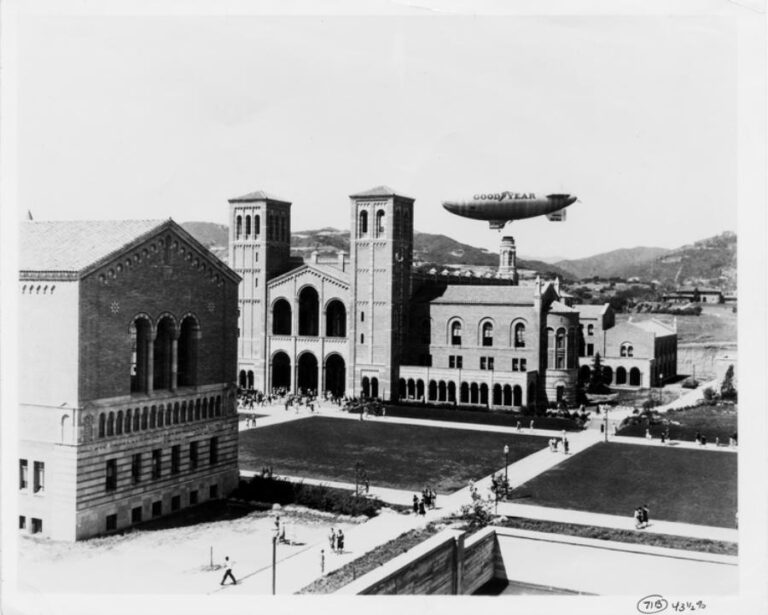Governor’s Pension Symposium of July 8

Governor Schwarzenegger ran a public pension symposium on July 8. It was essentially a panel of academics, legislators and former legislators (including former assembly speaker Willie Brown), local officials, past CalPERS members, and academics. You can see a video of the roughly 1-hour symposium by going to the governor’s website: www.gov.ca.gov and clicking on “multimedia.”
The symposium concentrated on CalPERS and, to a lesser extent, CalSTRS. UCRS was mentioned in passing at roughly minute 39, but was not explicitly discussed. In particular, the important $2-for-$1 issue that separates UCRS from other public pensions in California was not discussed. (Approximately $2 out of $3 of any employer contributions to UCRS would come from non-state sources.) On the other hand, at roughly minute 44, the Regents were held out as a better model for running a pension system than the CalPERS model which has elected employee representatives. The latter was depicted as a conflict of interest.
The so-called “Stanford Study,” was periodically mentioned but most of the data shown came from a similar study. The academic rational presented for using a low discount rate (which enlarges the measured unfunded liability) was that since the pension promise is ironclad, the discount rate should be a riskless measure.
Slides shown at the event are at:
http://www.gov.ca.gov/pdf/gov/pension_reform2010.pdf
Below is the text of the governor’s announcement of the event:
Governor Schwarzenegger Hosts Pension Roundtable
Gathers Academics, Elected Officials, Opinion Leaders to Discuss Comprehensive Pension Reform
Governor Arnold Schwarzenegger today hosted a pension reform roundtable with academics, elected officials, students and opinion leaders to discuss California’s pension crisis and the need for comprehensive reform. The Governor has been pushing for pension reform since coming into office, and recent studies by Stanford and the University of Chicago and Northwestern have reinforced the immediacy with which the legislature must act to reign in rising costs. The Governor has promised not to sign a budget that does not include pension reform and is calling for lower benefits for new employees, increased employee contributions, truthful financial disclosure and honest funding.
“Our pension crisis is a real problem that gets worse every day. California has $500 billion in unfunded pension debt that, without reform, will continue to grow and crowd out funding for programs and services Californians hold dear such as higher education, parks and environmental protection,” said Governor Schwarzenegger. “This roundtable is designed to expose the depths of the pension problem and to alert Californians of the even worse consequences should their leaders continue to ignore it. The state has a duty to ensure taxpayer dollars go to things the taxpayers care about, and that’s why I will not sign a budget that does not include pension reform.”
California has long provided generous pension benefits to its employees, but in 1999, the legislature and Governor Gray Davis significantly and retroactively boosted benefits after being assured by the California Public Employee’s Retirement System (CalPERS) that doing so would not cost “a dime of additional taxpayer money.” But since the passage of that legislation, taxpayer spending on pension benefits has skyrocketed by more than 2000 percent (nearly 3000 percent in the General Fund) while spending on University of California and California State University, parks and recreation and environmental protection has either declined or failed to keep up with inflation. This year, taxpayers are being required to divert nearly $3.8 billion from state programs and services to pay for retiree benefits provided by CalPERS, five times more than CalPERS projected in 1999. Over the past ten years, CalPERS’s projections were off by $20 billion, and now CalPERS predicts state costs will total $270 billion over the next thirty years and still leave pensions only 75 percent funded. Worse, that projection assumes the stock market will double every ten years – if not, the costs will be higher.
The Governor’s Administration has recently negotiated contract agreements with six state employee unions that include elements of pension reform that will help control costs going forward and ensure support for legislation requiring full disclosure from state pension funds and honest funding of pension promises as and when they are made. The six unions – the California Association of Highway Patrolmen, California Department of Forestry Firefighters, California Association of Psychiatric Technicians, American Federation of State, County and Municipal Employees, the Union of American Physicians and Dentists and the International Union of Operating Engineers – represent 40,000 of the state’s public employees. If ratified, these agreements will save the state nearly $1.4 billion in FY 2010-11, and, if similar agreements are reached with the state’s six other employee unions, state savings in FY 2010-11 would total $2.2 billion, with $1.2 billion from the General Fund.
The Governor’s Administration will continue to negotiate in good faith with all of the employee unions on all aspects of the pension reform measures. However, Governor Schwarzenegger will not sign a budget without four elements of pension reform that must be done legislatively, separate and apart from any memorandums of understanding. They include:
1. Rolling back the expansion of pension benefits adopted in 1999 as Senate Bill 400 (Chapter 555, Statutes of 1999).
2. Requiring a permanent five percentage-point increase in employee pre-tax contribution toward retirement benefits.
3. Calculating the retirement rate based on the highest three years of wages during employment instead of the highest single year.
4. Requiring full disclosure by state pension funds and honest funding of pension promises as and when those promises are made.
There were questions from reporters at the end of the symposium. Because the governor seemed to link his attempt to impose the minimum wage on state workers to push for a budget agreement and because he said he would not sign a budget without pension reform, he was questioned on that point. He said that with regard to pensions, he wanted a rollback of the pension increases in CalPERS that were made in 1999, presumably prospectively. Because his minimum wage dispute with the state controller revolves around the capability of state payroll computers to pay the minimum wage and then compensate workers for lost wages subsequently, the governor was asked if he believed in that capability. He avoided answering and tied the issue back to pensions.

